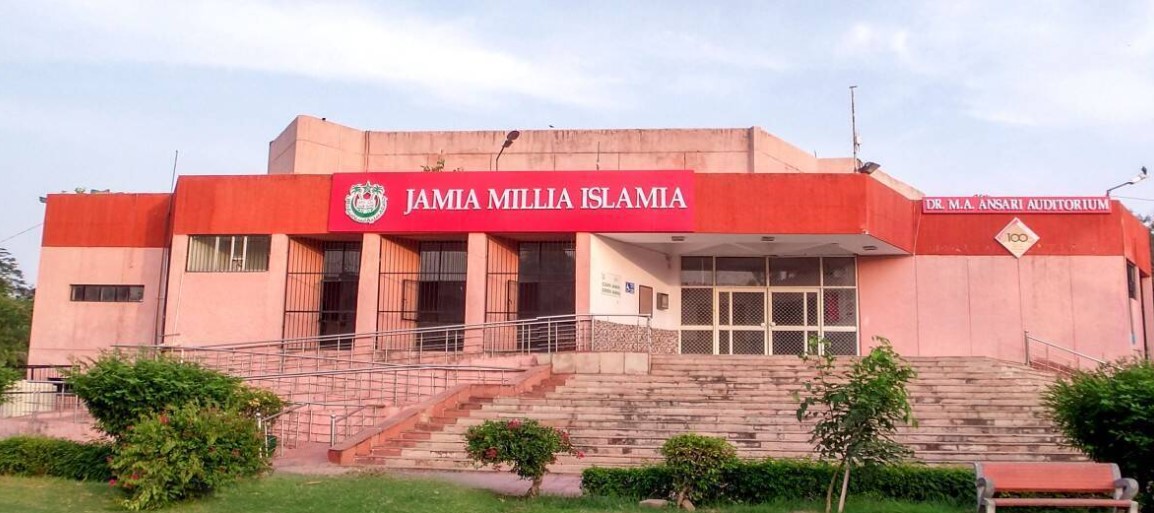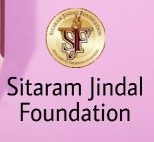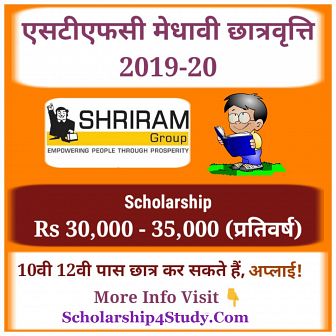
Jamia Millia Islamia, an institution originally established at Aligarh in United Provinces, India in 1920 became a Central University by an act of the Indian Parliament in 1988. In Urdu language, Jamia means ‘University’, and Millia means ‘National’.
The story of its growth from a small institution in the pre-independence India to a central university located in New Delhi—offering integrated education from nursery to research in specialized areas—is a saga of dedication, conviction and vision of a people who worked against all odds and saw it growing step by step. They “built up the Jamia Millia stone by stone and sacrifice by sacrifice,” said Sarojini Naidu, the nightingale of India.
Conception
Under the colonial British rule, two dominant trends joined hands and contributed towards in the birth of Jamia. One was the anti-colonial Islamic activism and the other was the pro-independence aspiration of the politically radical section of western educated Indian Muslim intelligentsia. In the political climate of 1920, the two trends gravitated together with Mahatma Gandhi as a catalyst. The anti-colonial activism signified by the Khilafat and the pro-independence aspirations symbolised by the non-cooperation movement of the Indian National Congress helped to harness creative energies and the subsequent making of Jamia Millia Islamia. Rabindranath Tagore called it “one of the most progressive educational institutions of India”.
Responding to Gandhiji’s call to boycott all educational institutions supported or run by the colonial regime, a group of nationalist teachers and students quit Aligarh Muslim University, protesting against its pro-British inclinations. The prominent members of this movement were Maulana Mehmud Hasan, Maulana Mohamed Ali, Hakim Ajmal Khan, Dr. Mukhtar Ahmad Ansari, and Abdul Majid Khwaja.
Foundation
The Foundation Committee met on 29 October 1920. It comprised of the following members:
- Dr. Mukhtar Ahmad Ansari (Delhi)
- Mufti Kafayattullah (Delhi)
- Maulana Abdul Bari Farang Mahali (UP)
- Maulana Sulaiman Nadvi (Bihar)
- Maulana Shabbir Ahmed Usmani (UP)
- Maulana Husain Ahmad Madni (UP)
- Chaudhury Khaleeq-uz-zaman (UP)
- Nawab Mohammad Ismail Khan
- Tasadduq Husain Khan (UP)
- Dr. Mohammad Iqbal (Punjab)
- Maulana Sanaullah Khan Amritsari (Punjab)
- Dr. Saifuddin Kitchlew (Punjab)
- Maulana Abul Kalam Azad (Bengal and Bihar)
- Dr. Syed Mehmood (Bengal and Bihar)
- Saith Abdullah Haroon Karachiwale (Sindh, Bombay and Hyderabad)
- Abbas Tyabiji (Sindh, Bombay and Hyderabad)
- Sait Miyan Mohammad Haji Jaam Chhotani (Sindh, Bombay and Hyderabad)
- Maulavi Abdul Haq (Sindh, Bombay and Hyderabad)
On 22 November 1920, Hakim Ajmal Khan was elected the first chancellor of Jamia. Mohamed Ali Jauhar became Jamia’s first Vice Chancellor, as Allama Iqbal could not accept the offer made through Gandhiji. It also elected a syndicate and created a syllabus subcommittee.
The known freedom fighter and Muslim theologian, Maulana Mehmud Hasan, laid the foundation stone of Jamia Millia Islamia at Aligarh on Friday, 29 October 1920. Considering the difficult circumstances under which it started, the list of its first teachers is very impressive:
Crisis
Born out of political crisis, it seemed for a while, Jamia would not survive the heat of the intense political struggle for the independence of India. It participated in the Bardoli resolution and sent volunteers across the country to motivate people to fight for the freedom of the country. The colonial British government soon imprisoned many of its teachers and students. In 1922, Gandhiji called off the non-cooperation movement. Even as its teachers and students were being released, Mustapha Kemal Ataturk declared the end of the Khilafat in 1924.
Suddenly Jamia saw itself in a great crisis. Some thought it had achieved its mission, as others believed that the institution had lost its raison d’etre with the end of the non-cooperation and the Khilafat movements. Even the little financial assistance, that the Khilafat had been giving it, also dried up. As even prominent people started deserting it, Jamia’s total collapse virtually became an imminent possibility.
Jamia Moves to Delhi
The saying, ‘when going gets tough the tough gets going’ cannot be truer about Jamia. As the crisis loomed large, Hakim Ajmal Khan, Dr. Mukhtar Ahmed Ansari and Abdul Majeed Khwaja—the first trio—supported by Gandhiji shifted Jamia from Aligarh to Karol Bagh, in New Delhi in 1925. Gandhiji boosted the morale of Jamia, saying, “The Jamia has to run. If you are worried about its finances, I will go about with a begging bowl”. Jamia followed Gandhiji’s constructive programme for self-reliance while it took to Charkha and Takli as favoured vocations.
Although Gandhi’s contacts helped to secure financial help for Jamia, the risk of helping a Congress-backed institution under the British Raj dissuaded many willing benefactors. Orthodox Muslims also viewed Jamia as a threat to Aligarh Muslim University, the ‘Muslim Oxford’. During those difficult days, it was Hakim Ajmal Khan who met most of Jamia’s expenses from his own pocket. Dr. M.A. Ansari and Abdul Majeed Khwaja toured India and abroad, explaining the importance of Jamia and collecting funds for this noble enterprise. Their collective intervention did avert a collapse that was almost certain.
Resurgence: The Second Trio
In 1925, after long deliberation, a group of three friends studying in Germany—Dr. Zakir Husain, Dr. Abid Husain and Dr. Mohammad Mujeeb—decided to serve Jamia. Dr. Zakir Husain, who had earned his doctorate in Economics from the University of Berlin, was a natural and charismatic leader. Dr. Abid Husain had his Ph.D. in Education. Mohammad Mujeeb, an Oxford scholar in History and a student of printing in Germany, was a passionate and committed reformist. Early in February 1926, the three friends left Germany for Jamia by the Norddeutscher Lloyd steamer, SS Derfflinger.
In Jamia, Dr. Zakir Husain, was offered a salary of Rs. 100. His two other friends with European qualifications were offered Rs 300 each. Realising that the possibility of making payments was beyond Jamia’s limited resources, Abid Husain and Mohammad Mujeeb voluntarily reduced their salaries to Rs. 100 each. Moved by the commitment of his friends, Dr. Zakir Husain also reduced his own salary to Rs. 80. One of the first steps they took was the introduction of the hugely popular evening classes for adult education. This movement was later to become, in October 1938, an institution called Idara-i-Taleem-o-Taraqqi. It kept growing so popular that separate rooms had to be built to accommodate the students.
In 1928 Hakim Ajmal Khan passed away. That was the beginning of the second financial crisis, as it was Hakim Sahib himself who had been meeting most of Jamia’s financial needs. The leadership of Jamia then moved into the hands of Dr. Zakir Husain, who became its Vice Chancellor in 1926. To resolve Jamia of these frequent crises, a group of young Jamia teachers, led by Dr. Zakir Husain, took a pledge to serve Jamia for the next twenty years on a salary not more than Rs. 150. This group was called the Life Members of Jamia. (History repeated in 1942 when a second group of Jamia teachers took a similar pledge).
Jamia’s department of Printing and Publications was trifurcated in 1928 with the newly established Jamia Press at Darya Ganj, Urdu Academy, and Maktaba Jamia under the charge of Prof. Mohammad Mujeeb, Dr. Abid Husain and Mr. Hamid Ali respectively.
Shifting to the New Campus
On 1 March 1935, the foundation stone for a school building was laid at Okhla, then a non-descript village in the southern outskirts of Delhi. In 1936, all institutions of Jamia, except Jamia Press, the Maktaba and the library, were shifted to the new campus. The basic emphasis of Jamia was on evolving innovative education methods. This led to the establishment of a teacher’s college (Ustadon ka Madrasa) in 1938. In 1936, Dr. M.A. Ansari passed away. On 4 June 1939, Jamia Millia Islamia was registered as a society.
The fame of Jamia as an innovative education movement spread and dignitaries from foreign countries began visiting Jamia. Husein Raouf Bey (1933), Dr. Behadjet Wahbi of Cairo (1934), Ms. Halide Edib of Turkey (1936) were some of them. Foreigners, impressed by Jamia, began working in Jamia. The German lady Ms. Gerda Philipsborn (popularly known as Aapa Jaan) served Jamia for many years is buried in Jamia.
In 1939, Maulana Ubaidullah Sindhi (1872-1944), a theologian and freedom fighter, came to stay in Jamia on the invitation of Dr. Zakir Husain. He started a school of Islamic Studies in Jamia, called Baitul Hikmah, propagating the ideology of Shah Waliullah. Zakir Husain, later the President of India, recalled those days of indestructible optimism in the face of depravity ‘when they had a longing to build and nothing to build with, as “days of joy”.
In 1946, during Jamia’s silver jubilee celebration, one could see the crisis that India had to face in the following year: Mr. and Mrs. Mohammad Ali Jinnah, and Liyaqat Ali Khan were on one side of Dr. Zakir Husain, the vice chancellor, on the dias; Pandit Jawaharlal Nehru, Asaf Ali and Sir C Rajagolapachari were on the other side.
Independence and After
The riots following partition that shook the northern India did affect Jamia; but not its campus. Gandhi observed that its campus remained “an oasis of peace in the Sahara” of communal violence. Maktaba Jamia alone lost books worth seven lakhs in arson.
After the attainment of Independence, Jamia continued to grow as an academic institution with a difference. Many foreign dignitaries made it a point to visit Jamia Millia Islamia during their visits to New Delhi. Among those who visited Jamia include Marshal Tito (1954), king Zahir Shah of Afghanistan (1955), crown prince Faisal of Saudi Arabia, king Reza Shah Pehlavi of Iran (1956) and prince Mukarram Jah (1960).
Following the death of Mr. Abdul Majeed Khwaja in 1962, Dr. Zakir Husain, who by then had taken charge as the Vice President of India, became Jamia’s Chancellor (1963).
Deemed to be University
In 1962, the University Grants Commission declared the Jamia a ‘deemed to be University’. Soon thereafter, the School of Social Work was established in 1967. In 1971, Jamia started the Zakir Husain Institute of Islamic Studies, to honour Dr. Zakir Husain, who had passed away in 1969. BE course in Civil Engineering commenced in 1978; in 1981, the faculties of Humanities and Languages, Natural Sciences, Social Science, and the State Resource Centre were founded. In 1983, it started the Mass Communication Research Centre and the Centre for Coaching and Career Planning. In 1985, it established the Faculty of Engineering & Technology and the University Computer Centre. Academic Staff College and the Academy of Third World Studies followed in 1987 and 1988.
Central University
By a Special Act of the Parliament, Jamia Millia Islamia was made a central university of India in December 1988. In the list of the Faculties, i.e. Education, Humanities & Languages, Natural Sciences, Social Sciences. Engineering & Technology, one more Faculty - Faculty of Law, was added in 1989. Many new courses and programmes at UG and PG levels have since been added.
Besides its Nine faculties, the Jamia has a number of centres of learning and research, like AJK-Mass Communication Research Centre (MCRC), Academy of International Studies etc. The Jamia is also marching ahead in the field of Information Technology (IT). It offers various undergraduate and postgraduate IT courses. Apart from this, the Jamia has a campus wide network which connects a large number of its departments and offices.










